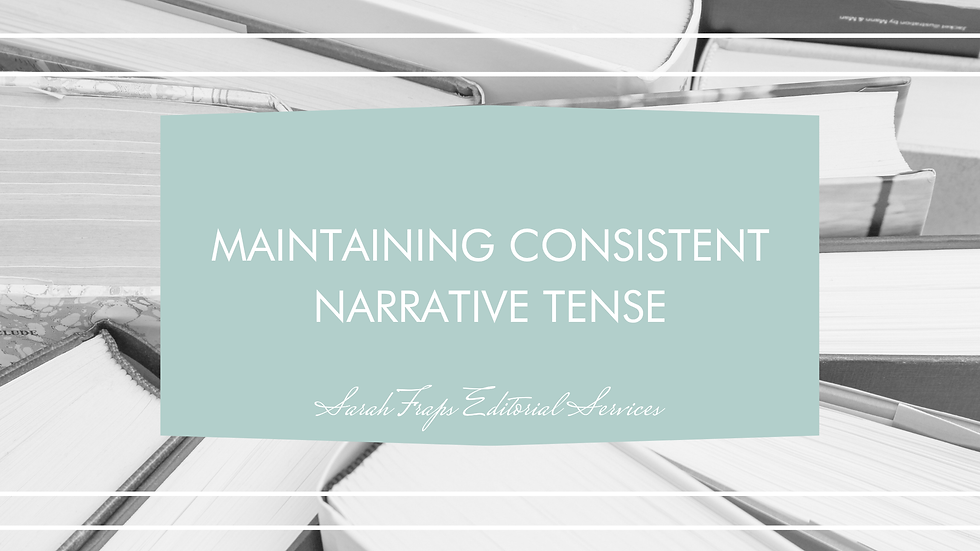Just finished your first draft? Here's what to do next (Q&A with a freelance editor)
- Sarah Fraps

- Jun 20
- 3 min read
If you’re new to writing and dreaming of publishing your first book, but you’re staring at "The End" and wondering, now what?—this post is for you. 👋 As a freelance book editor and proofreader, I often work with writers who aren’t sure what the next steps are after getting words on the page. Here’s a practical Q&A to guide you through what comes next.

Q: I've finished my first draft. What do I do?
A: Step one: Celebrate! Writing a first draft is a big accomplishment.
Then: set it aside. Seriously—step away for a little while. A few days, a couple of weeks, even a month if you can swing it. This will help you return to your draft with fresh eyes and a clearer perspective.
When you're ready to dive back in, start revising. It helps to have some tools in your corner: a good writing craft book, an online course, feedback from a critique group, beta readers, or a few trusted writer friends. Guidance at this stage can be invaluable.
Q: What's the difference between revising and self-editing?
A: These are two distinct stages.
Revising is the big-picture stage. You’re looking at plot holes, character arcs, pacing, world-building, and structure. It often involves cutting or adding scenes, rearranging chapters, and improving clarity or emotional impact. Input from others—beta readers, critique partners, or editors—can be especially helpful here.
Self-editing is more detail-oriented. This is when you tackle grammar, sentence structure, spelling, word choice, and style. You might use editing software like ProWritingAid or Grammarly at this stage, or go line-by-line on your own.
Think of it like this: revising is remodeling the house and self-editing is repainting and polishing.
Q: How many drafts should I write before hiring an editor?
A: It depends—every writer’s process is different.
If you’re looking for early feedback (like developmental editing or a manuscript review), you might only need a first or second draft. Some editors (developmental editors, for instance) will even review a partial manuscript.
If you're looking for sentence-level work—restructuring, improving flow, refining word choice—you’ll want your content as finalized as possible. That often happens around the third, fourth, or fifth draft, but there’s no magic number. Some writers go through a dozen drafts before they feel ready.
The key: make sure the major changes are out of the way before moving into sentence-level editing. After all, there's no point in worrying about word choice or syntax if you're going to ax an entire paragraph or chapter altogether. As much as possible, writing, drafting, revising, and editing should be a linear path, each step taking your manuscript closer to being publishing ready.
This is a part of the process where writers can become stuck. Getting outside perspectives (from friends, family, critique partners, or beta readers) is key to helping writers know when it’s time to move beyond the write-revise cycle and start looking for professional editing support.
Q: What should I share with an editor when I reach out?
A: Be clear and upfront. Most editors will want to know:
Your book’s word count and genre
A short summary
What stage your manuscript is in—how many drafts you've completed, what feedback you've already received
Your publishing goals—Are you planning to query agents? Self-publish? Submit directly to small presses?
The type of editing you’re looking for:
Do you want big-picture feedback (structure, pacing, character development)?
Are you looking for sentence-level work (line/copyediting)?
Or do you just need a final polish (proofreading)?
Giving this information upfront helps editors assess if they’re the right fit for your project—and how they can best support you.
Final Thoughts
There’s no one-size-fits-all approach to writing, revising, and publishing. Every writer’s path looks a little different. But if you’ve just finished your first draft and aren’t sure where to go next, hopefully these steps help you move forward with more confidence—and maybe a little excitement too.
You’ve already done the hardest part: getting the story down. Now you get to shape it into something great. 💪
Have more questions related to what to do after finishing your first draft, or have other general editing process questions? Let me know in the comments and I'll piece together another blog post on this topic.








Comments